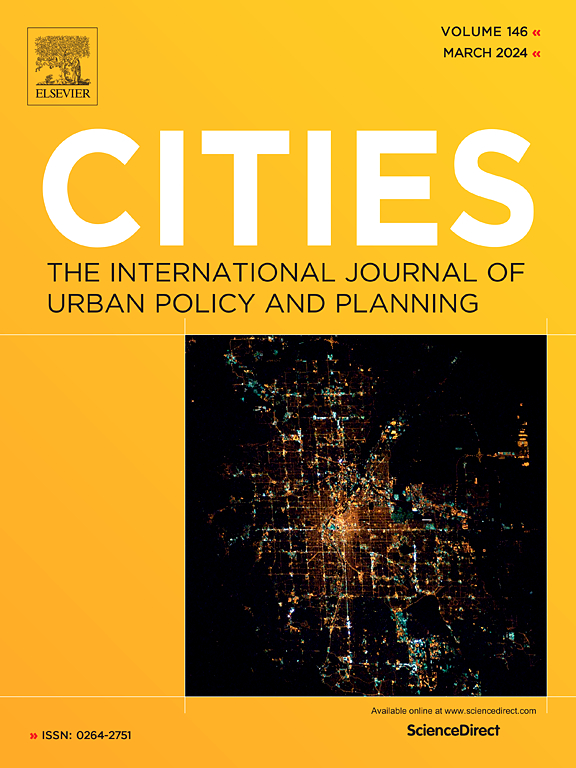The attraction gradient of urban functions: How does functional mix at multiple scales predict urban vitality
IF 6
1区 经济学
Q1 URBAN STUDIES
引用次数: 0
Abstract
What determines urban vitality has been a key research topic for urban planning and management since Jane Jacobs. Recently, statistical examinations of the relationship between the urban environment and vitality have become possible, facilitated by the availability of human positioning big data and fine-grained built environment data. However, existing studies tend to oversimplify the spatial impact of urban environmental factors, focusing solely on immediate surroundings. Due to people's trip chaining and exploration behavior, a place's functions can have a “spill-over” effect across the urban space. This study, therefore, aims to investigate such “attraction gradient” of urban functions to better understand the spatial relationship between urban vitality and its influencing factors. The study uses mobile phone and point-of-interest data from Beijing and Chengdu, China, to model the relationship between a place's vitality and urban functions in different distance bands. We find that, when counting from a place, urban functions within five kilometers significantly predict urban vitality, whereas beyond five kilometers, their contribution is marginal. Daytime and nighttime attraction gradients also differ. This study offers insights into the spatial relationship between urban function and vitality, enhancing our understanding and modelling of urban vitality.
城市功能的吸引力梯度:多尺度的功能组合如何预测城市活力
自简-雅各布斯以来,城市活力的决定因素一直是城市规划和管理的关键研究课题。最近,由于人类定位大数据和精细的建筑环境数据的出现,对城市环境与活力之间关系的统计研究成为可能。然而,现有研究往往将城市环境因素的空间影响过于简单化,只关注周边环境。由于人们的出行链和探索行为,一个地方的功能会对整个城市空间产生 "溢出 "效应。因此,本研究旨在研究城市功能的这种 "吸引力梯度",以更好地理解城市活力与其影响因素之间的空间关系。本研究利用中国北京和成都的手机数据和兴趣点数据,建立了不同距离带的地方活力与城市功能之间的关系模型。我们发现,从一个地方算起,五公里以内的城市功能对城市活力有显著的预测作用,而五公里以外的城市功能对城市活力的贡献则微乎其微。白天和夜间的吸引力梯度也有所不同。这项研究有助于我们深入了解城市功能与活力之间的空间关系,从而加强我们对城市活力的理解和建模。
本文章由计算机程序翻译,如有差异,请以英文原文为准。
求助全文
约1分钟内获得全文
求助全文
来源期刊

Cities
URBAN STUDIES-
CiteScore
11.20
自引率
9.00%
发文量
517
期刊介绍:
Cities offers a comprehensive range of articles on all aspects of urban policy. It provides an international and interdisciplinary platform for the exchange of ideas and information between urban planners and policy makers from national and local government, non-government organizations, academia and consultancy. The primary aims of the journal are to analyse and assess past and present urban development and management as a reflection of effective, ineffective and non-existent planning policies; and the promotion of the implementation of appropriate urban policies in both the developed and the developing world.
 求助内容:
求助内容: 应助结果提醒方式:
应助结果提醒方式:


